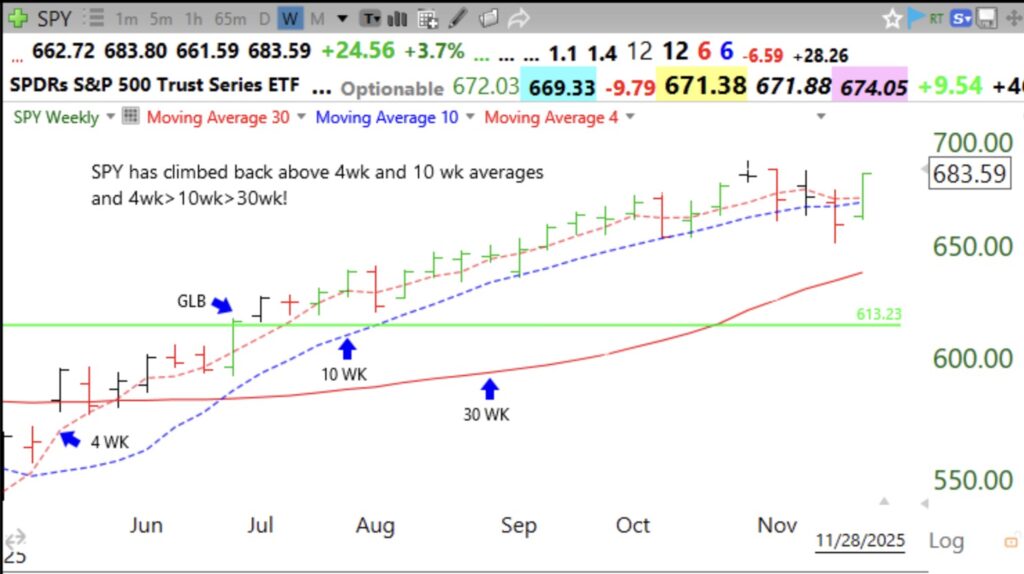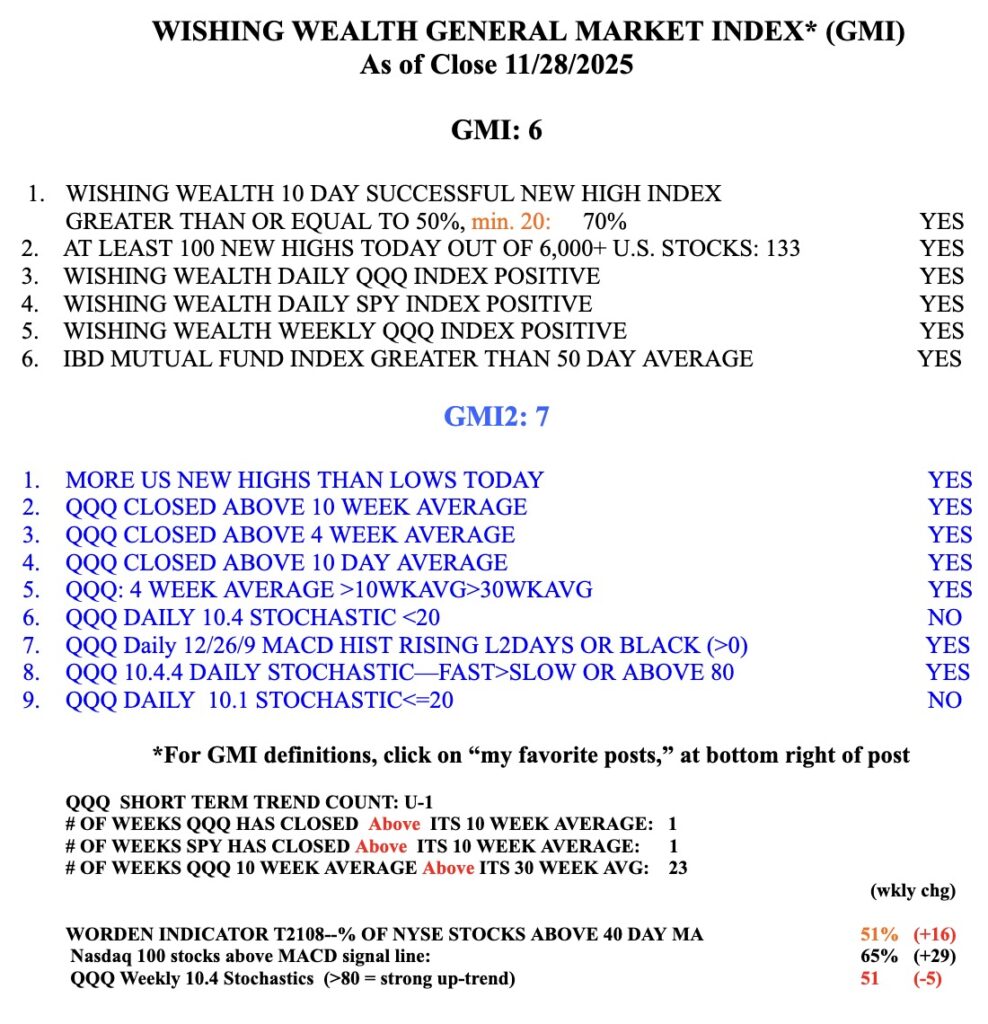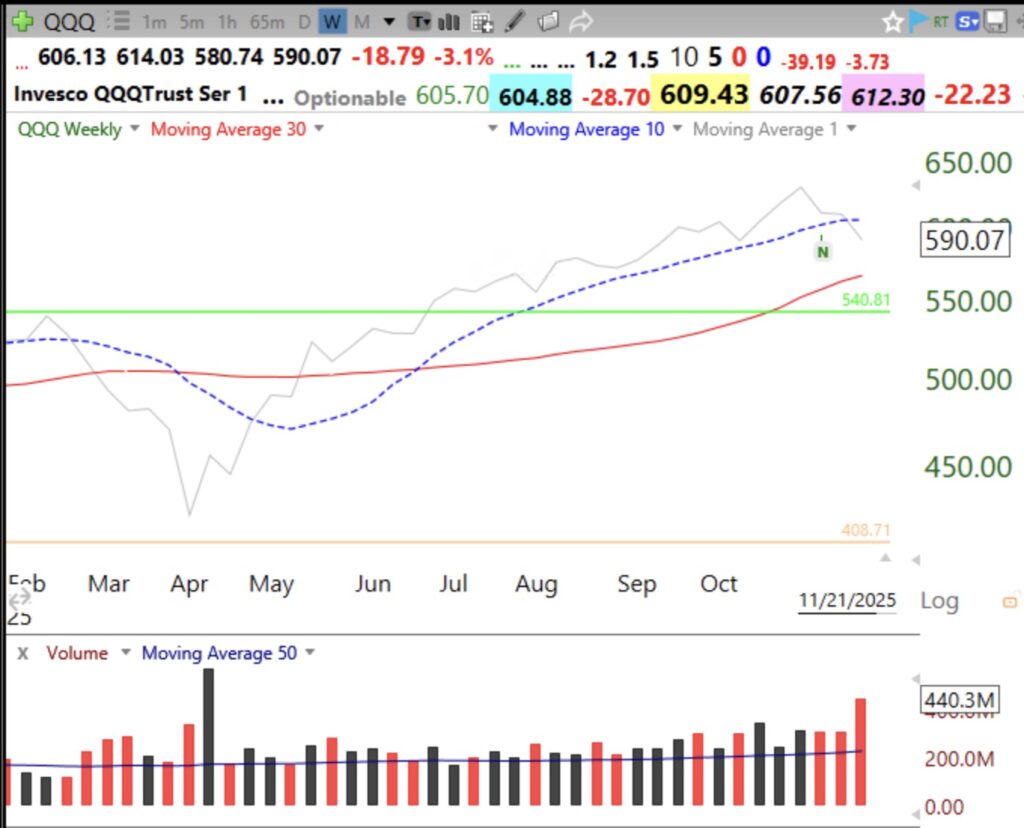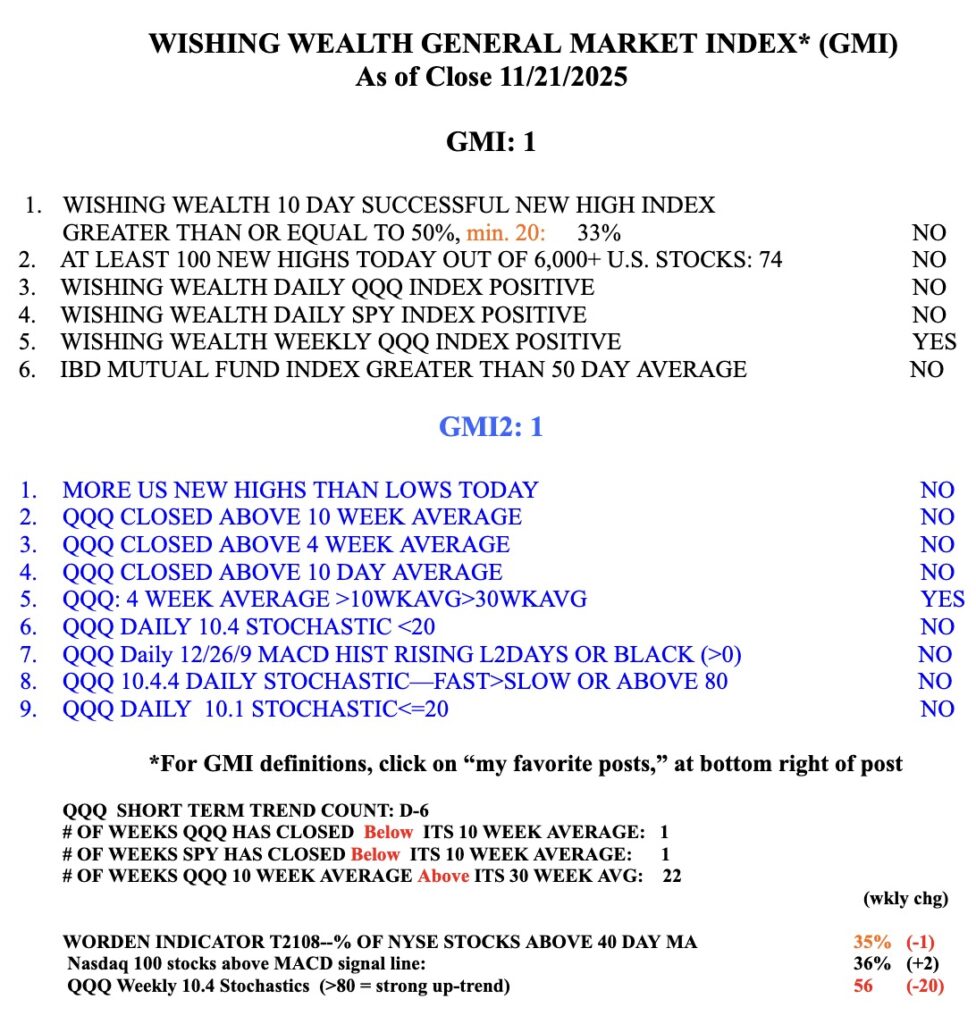The media pundits are all predicting doom or gloom. I prefer to just analyze the current market’s trend and react to it. My indicators have alerted me to get out of the markets early in all major declines since 2000. I post what I am doing in order to teach other traders and investors. When the market closes (gray line) below its 10 week average I become defensive. When it closes below its 30 week average I begin to exit. Now that we are in Day 6 of the QQQ short term up-trend I am slowly adding TQQQ and buying some individual biotechs and a biotech ETF. I only buy individual stocks that have traded recently at an ATH (all-time high). See my recent TraderLion presentation for my rationale. See also the current GMI table below.
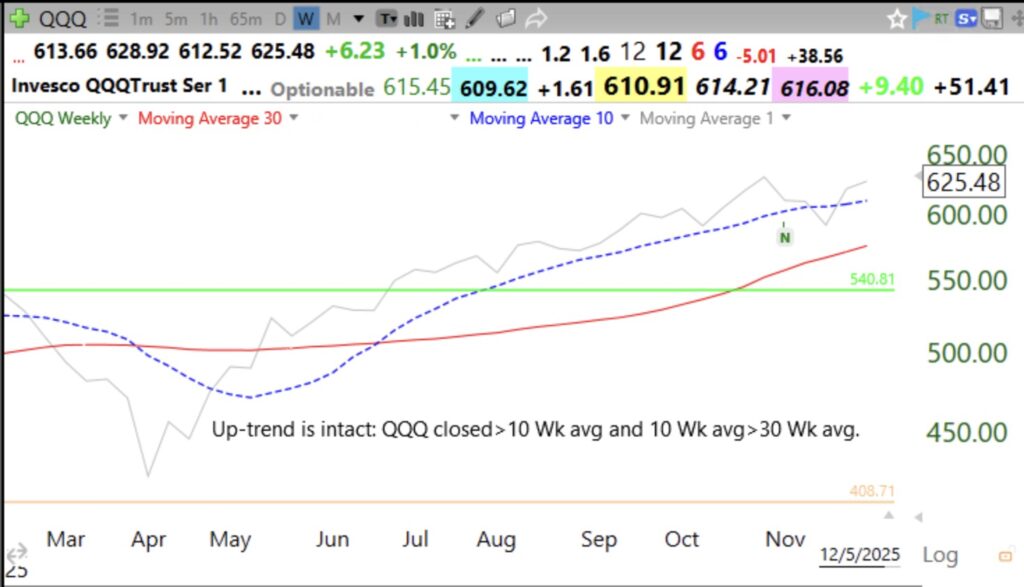
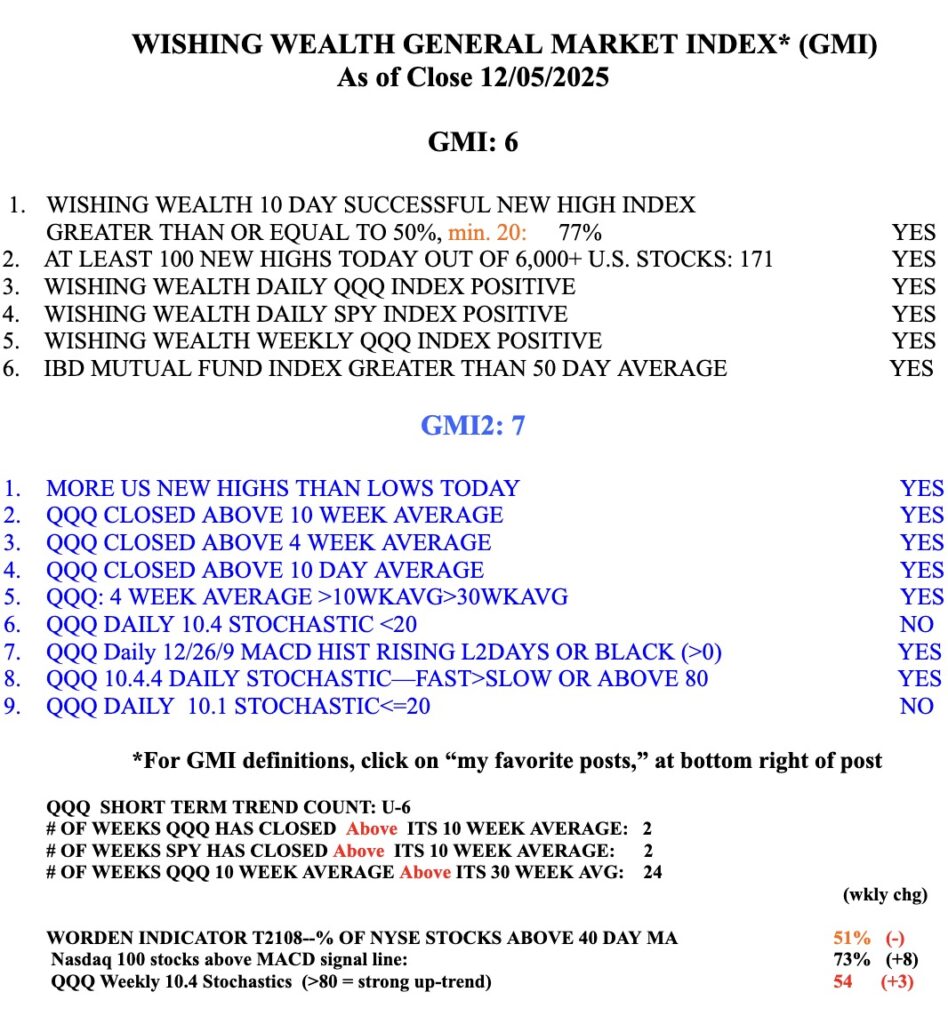
Screenshot
